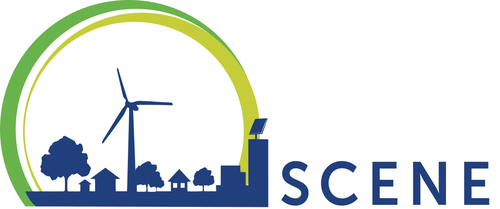This post forms part of the SDG series at Scene Connect, contributing to Global Goals Week in which governments, businesses, and civil society representatives gather at the UN Headquarters in New York for the Sustainable Development Summit 2019.
In this short blog series, we reflect on how our own projects support the 17 Sustainable Development Goals, and we explore what community energy, renewable energy, and energy innovation might look like in the bright future which we are working to help build.
… about delivering inclusive participatory workshops in rural communities
Globally 40% of food production is on irrigated land, but in Uganda only 0.5% of farmland is irrigated. Climate change is negatively affecting agricultural productivity, economic growth and food security for rural small-scale farmers as rainfall is becoming inconsistent and dry seasons longer. Scene is leading project REFRUIT (Resource Efficient Farming by Renewable Ugandan Irrigation Technology) to address SDG Goal 2 on Zero Hunger, SGD 5 on Gender Equality and SDG 13 on Climate Action.
In this piece I reflect on my lessons learnt from facilitating baseline participatory workshops to 11 small scale farmers and 19 area coordinators in the Arua and Gulu districts of Northern Uganda. In July 2019 Scene, along with partners Gulu Agricultural Development Company (GADC) delivered two workshops centred around current irrigation methods farmers adopt, the intrinsic socio-economic and cultural challenges experienced by people in accessing irrigation. We sought feedback to allow us to tailor to the local context the design of a precision irrigation commercial strategy and technological solution.
After a rather bumpy 6-hour drive on the unforgiving pothole filled roads from Kampala to Arua, we had finally arrived at GADC’s Rhino Camp HQ ready to embark on what would be an all-inspiring week. We had spent months planning every detail of these workshops in our air-conditioned offices in London and Edinburgh – now it was game time, like in any rugby game each day was like a set piece, dynamic and unique, we knew adapting to the flow of our audience was essential if we were to gain the most learning from this trip.
Lesson 1: Let the community lead you
Clap, clap, stamp, stamp, one, two, three. At the end of each day, the farmers’ selected spiritual leader would lead this joyous cheer as a way of showing appreciation. A timekeeper would keep the day running according to programme, and an energiser lead would take responsibility for boosting the energy of the group, especially after lunch. This was new to me at first, but as each session progressed, I learnt that by allowing the group to organise themselves in their unique way, familiar to them, a sense of togetherness was shared and the group were not just mere recipients but active participants in the dialogue. This continued engagement really helped us to build that trust and gain buy-in from the local people.
Lesson 2: Use smaller groups to gain better female participation
Generally, men were very comfortable in sharing their opinions, at times dominated the conversations with women contributing little or nothing to discussions. Whilst traditional gender roles and socio-cultural norms attributed to this, it wasn’t that women had nothing to say, but women didn’t feel comfortable sharing their views in a male dominated environment.
During a session on understanding the priorities for selecting irrigation methods; I observed one woman was breastfeeding her baby, a few had come with their husbands and had let them do most of the talking in the morning sessions and other’s preferred speaking in their local language. I thought to myself: how do I make these women’s views part of the narrative? I decided to lead a woman-only session, in this environment women spoke openly and at great length about their challenges. Interestingly, women expressed the issue of gender-based violence during post-harvest seasons when dividing profits for household spending. This coupled with the limitations in land ownership for women, meant that the potential economic benefits from improved irrigation of high value crops would not be equitable.
Lesson 3: Speak the language people understand, literally.
Day 2 we delivered a workshop to GADC’s area coordinators who managed a group of farmers in their region. We overlooked the language barriers because we assumed that area coordinators would be proficient with English as their role entailed numerous administrative tasks. We were very wrong.
“Good morning everyone, before we start today’s session, we would like people to introduce themselves, what is your name? Where you are you from? What crops do you produce? And, what is the distance from your home to your farm?”.
After a warm introduction from us, it was time now to hear from the area coordinators.
The room fell silent. No one said a word.
“Would anyone like to introduce themselves…please” , Dominic asked hesitantly.
Silence, again. This was puzzling.
It wasn’t until Julius, one of GADC’s lead facilitators, stepped in to rescue the awkward silence and blank steers in the room.
He asked the room, “how many people speak Acholi? [Hands went up quickly] Madame what language does the madame next to you speak…aha and sir what language do you speak”. This continued until there was a consensus in the room. Over 4 different languages from Northern Uganda were spoken between 19 people. And what happened next you wouldn’t believe. We started to get more participation from the group once the translations started, to the point where we couldn’t stop people talking. At the end of this session, Dominic and I changed our plan for the remainder of the day to accommodate translations.
What became clear to me at the end of this week was that community participation is central in addressing SDG Goal 2 on Zero Hunger, SGD 5 on Gender Equality and SDG 13 on Climate Action. Without a clear understanding of the needs of the people most affected by climate change, it is impossible to design effective solutions – even with the best of intentions.
- Catherine Munyarari







